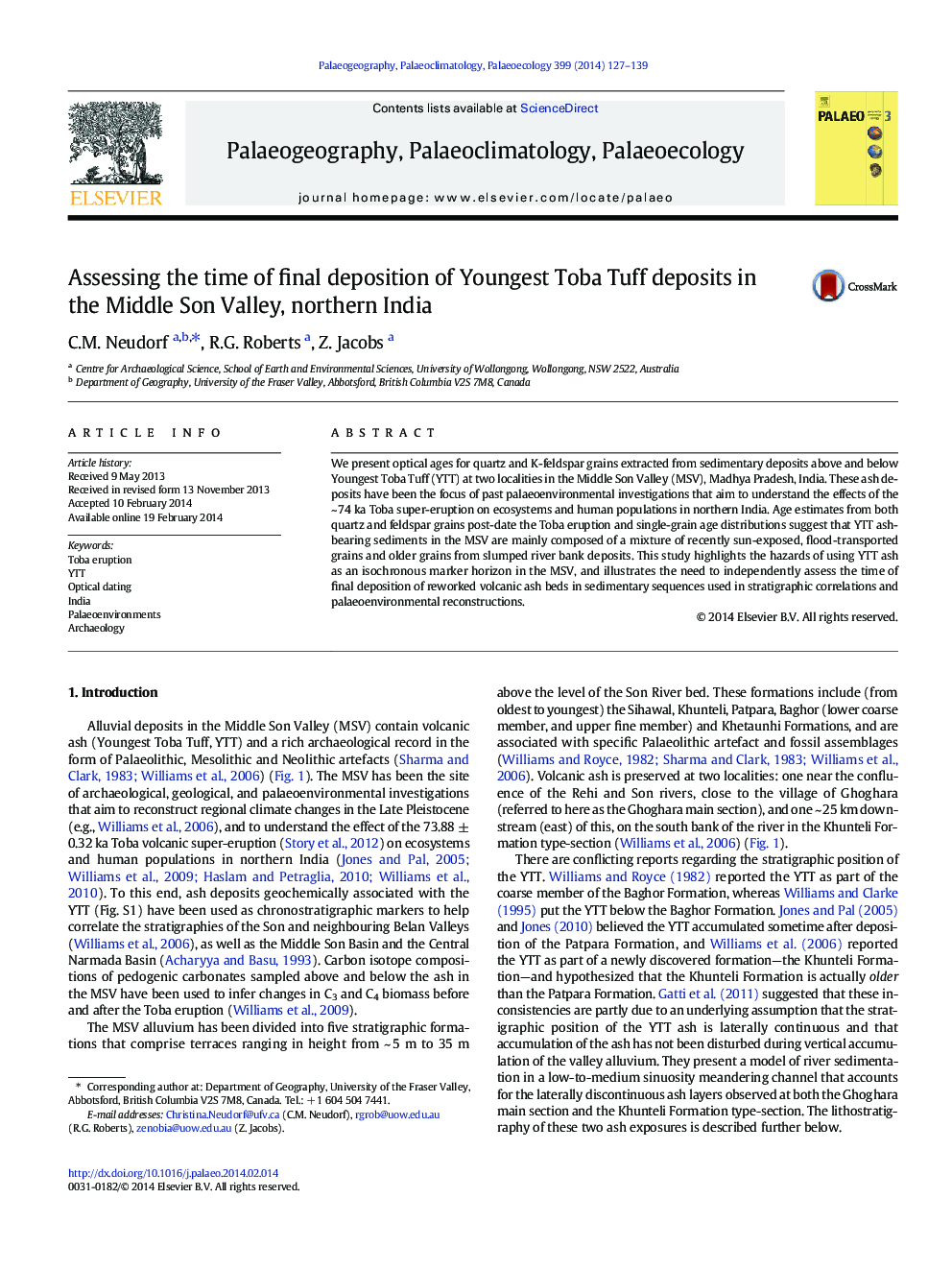| Article ID | Journal | Published Year | Pages | File Type |
|---|---|---|---|---|
| 4466302 | Palaeogeography, Palaeoclimatology, Palaeoecology | 2014 | 13 Pages |
•Indian sediments containing Youngest Toba Tuff are dated using optical dating.•All age estimates post-date the ~ 74 ka Toba super-eruption.•The sediments contain fluvial and incompletely bleached slumped river bank deposits.•The tuff is an unreliable chronostratigraphic marker in palaeoenvironmental studies.
We present optical ages for quartz and K-feldspar grains extracted from sedimentary deposits above and below Youngest Toba Tuff (YTT) at two localities in the Middle Son Valley (MSV), Madhya Pradesh, India. These ash deposits have been the focus of past palaeoenvironmental investigations that aim to understand the effects of the ~ 74 ka Toba super-eruption on ecosystems and human populations in northern India. Age estimates from both quartz and feldspar grains post-date the Toba eruption and single-grain age distributions suggest that YTT ash-bearing sediments in the MSV are mainly composed of a mixture of recently sun-exposed, flood-transported grains and older grains from slumped river bank deposits. This study highlights the hazards of using YTT ash as an isochronous marker horizon in the MSV, and illustrates the need to independently assess the time of final deposition of reworked volcanic ash beds in sedimentary sequences used in stratigraphic correlations and palaeoenvironmental reconstructions.
